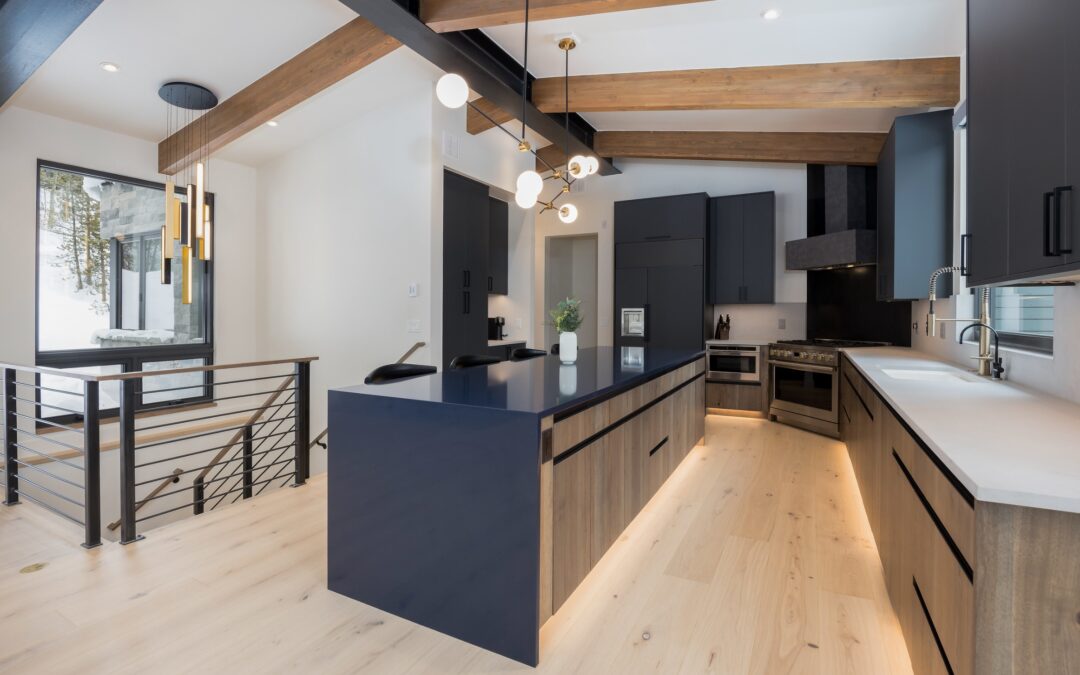When choosing between solid hardwood and engineered hardwood, it’s easy to be drawn to the old-school charm of traditional wood flooring. But while solid hardwood may have history, engineered hardwood is built for modern living. With greater dimensional stability, design flexibility, and installation versatility that suits today’s lifestyles and budgets, engineered hardwood flooring is often the superior choice. Let’s take a closer look at why engineered hardwood might be the smarter solution for your home.
Understanding the Construction: The Core Difference
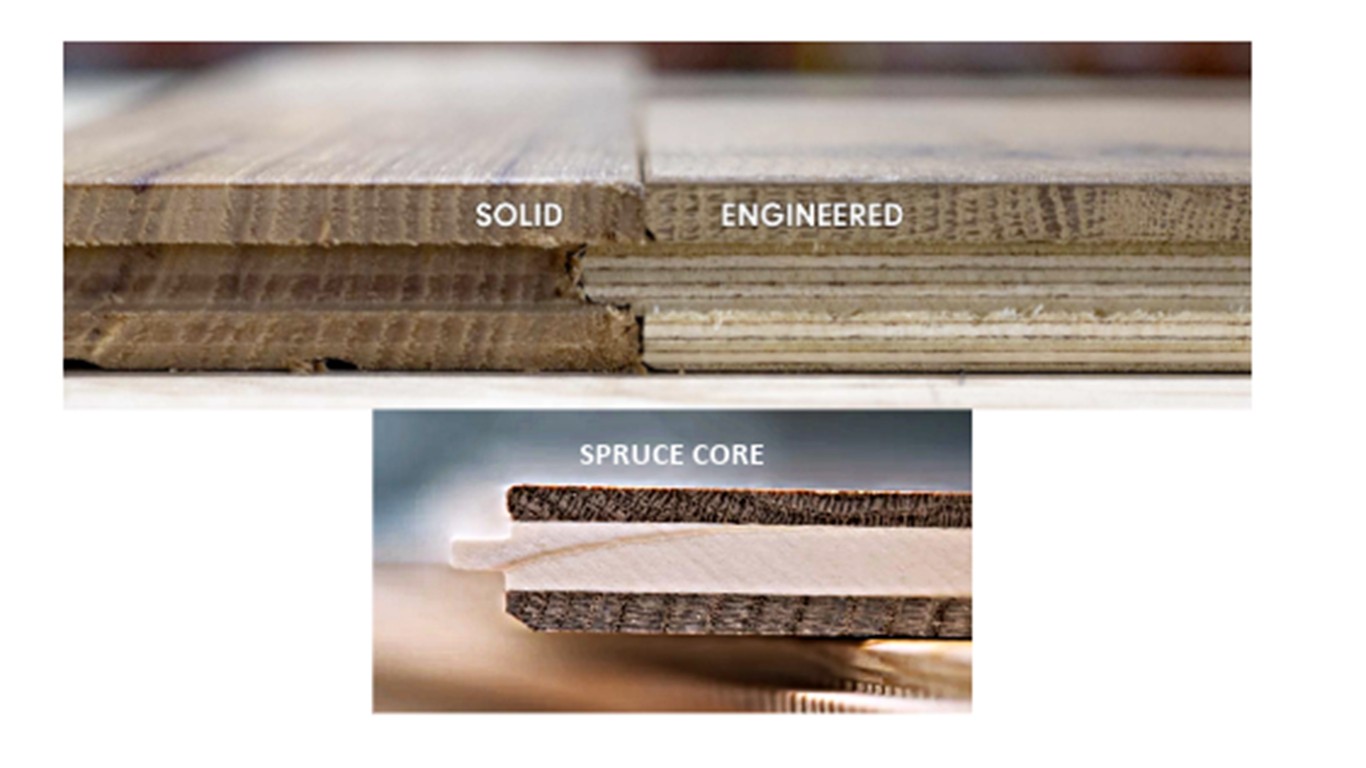
Solid hardwood is exactly what it sounds like—planks milled from a single piece of hardwood, typically ¾-inch thick. This type of flooring has been a mainstay for generations, and its appeal lies in its authenticity, longevity, and the ability to be refinished many times.
Engineered hardwood, on the other hand, is made from multiple layers: a top layer of real hardwood and a core of high-quality plywood, high-density fiberboard, or a solid spruce core. This layered construction gives engineered hardwood a huge edge in performance.
While both types of flooring use real wood, engineered hardwood is built to resist environmental changes, making it less likely to expand, contract, warp, or cup in response to humidity or temperature fluctuations. This enhanced structure is especially beneficial in homes that experience seasonal changes or have areas prone to moisture.
Durability Designed for Real Life
Engineered hardwood is crafted to thrive in the environments where solid hardwood can struggle. Whether you live in a climate with fluctuating humidity or are looking to install wood flooring in moisture-prone areas like kitchens, basements, or entryways, engineered hardwood holds its shape and stays beautiful.
Because of its dimensional stability, engineered hardwood is less prone to gapping or warping. That means fewer worries about the seasonal movement that can affect solid hardwood floors. It’s also an excellent option for homes with radiant heat systems or slab foundations—scenarios where solid wood doesn’t perform well.
Beyond temperature and humidity concerns, engineered hardwood is also more resistant to everyday wear and tear. Thanks to advanced finishes and its layered build, it can withstand dropped toys, shifting furniture, pet traffic, and general family life with less visible impact than traditional hardwood. This makes it especially valuable in high-traffic areas like hallways, family rooms, and open-concept kitchens where durability matters most.
More Places, More Possibilities
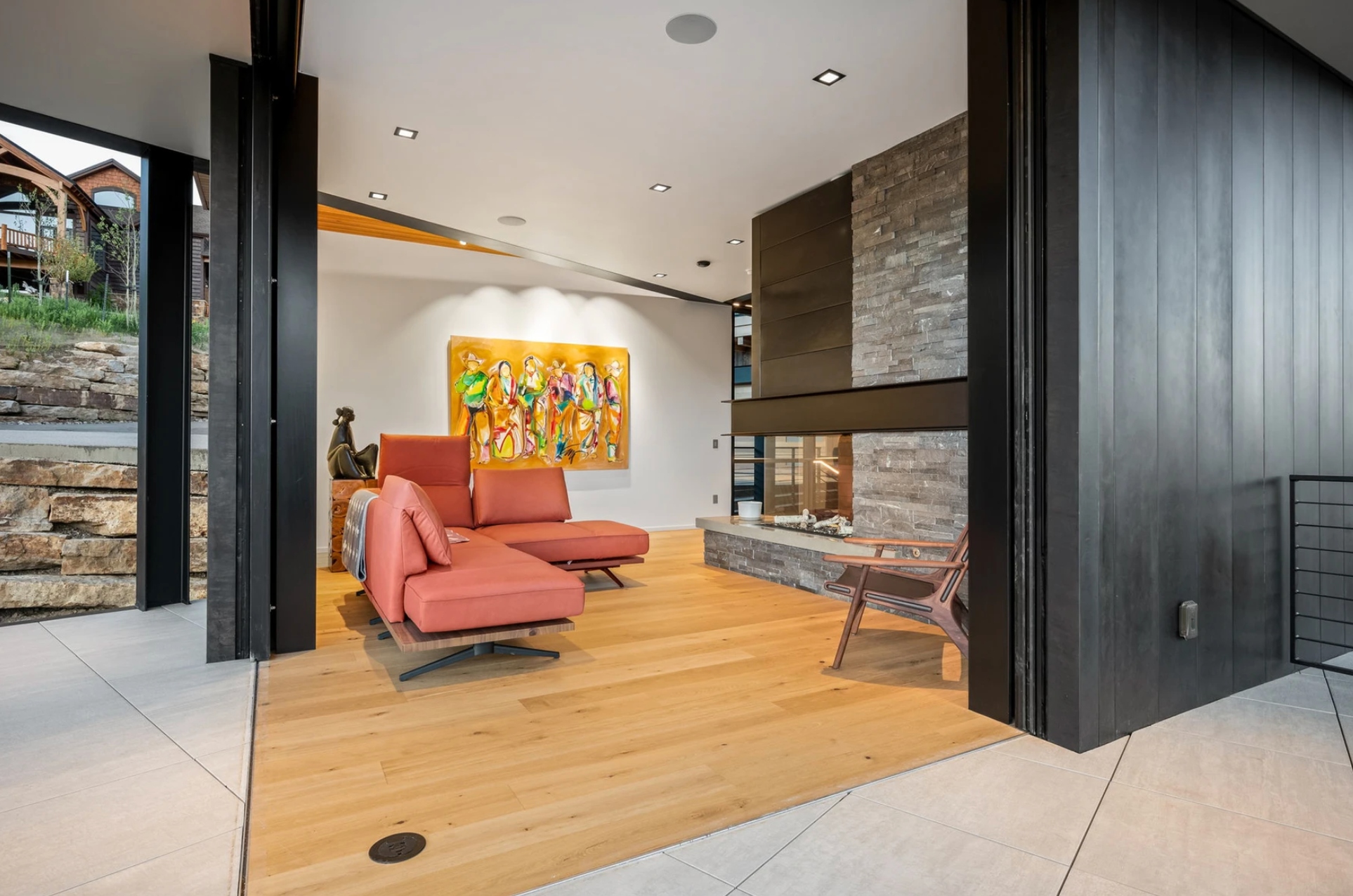
One of the biggest advantages of engineered hardwood is its installation versatility. Unlike solid hardwood, which typically needs to be nailed down over a wood subfloor, engineered options can be nailed, glued, or floated. That makes it easier to install in:
- Basements
- Over concrete slabs
- Multi-level homes
- With radiant heat systems
This flexibility means you can use engineered hardwood in virtually any room of your home, bringing a consistent and cohesive wood look across all levels of your space.
With engineered hardwood, even challenging spaces like sunrooms, garden-level family rooms, bathrooms, or mudrooms become fair game for wood flooring. Whether you’re working with an older home with uneven subfloors or a modern build with concrete construction, engineered wood adapts to the conditions. For remodelers, this can also translate to significant cost savings—since engineered flooring can often be installed without the need for a complete subfloor overhaul.
Modern Design Freedom
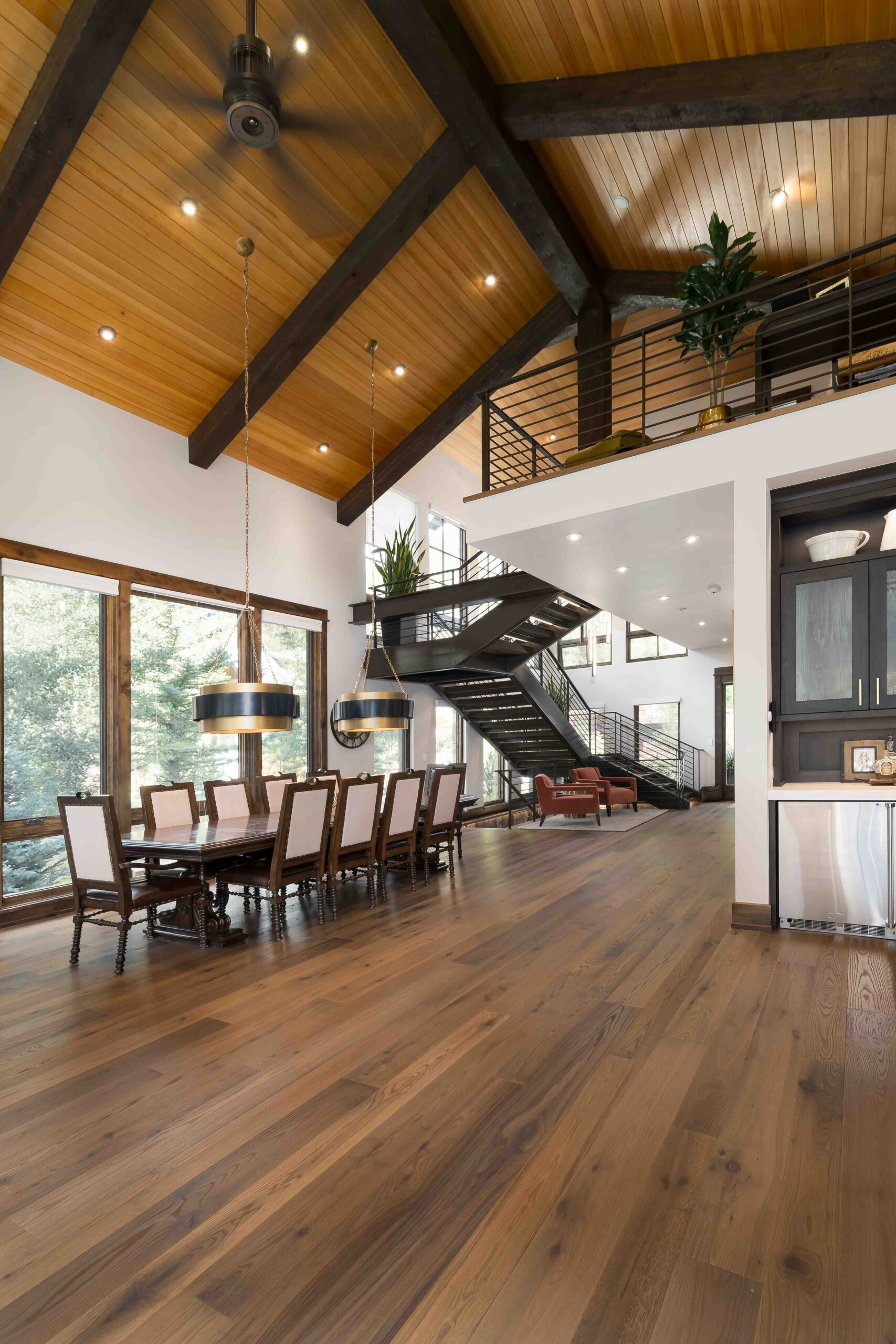
Engineered hardwood flooring also offers a wider range of design options. Because of its structural stability, manufacturers can produce engineered planks in wider and longer formats that are less prone to movement than solid boards of the same size.
- Love the wide plank look that’s popular in modern interiors? Engineered makes it possible.
- Want a European oak with a wire-brushed texture and bevel? It’s available.
- Dreaming of a herringbone or chevron pattern? Engineered formats are easier to work with.
And since the top layer is real wood, you still get the beauty and warmth that makes hardwood so timeless—just with more flexibility.
Engineered hardwood opens the door to a wealth of design possibilities that may be limited or cost-prohibitive with solid wood. You can choose from a diverse range of species, colors, grades, and finishes—including smoked, oiled, hand-scraped, and distressed options. Whether you’re aiming for coastal chic, farmhouse warmth, or Scandinavian minimalism, engineered hardwood gives you the design palette to bring your vision to life.
Built to Last with Less Maintenance Stress
Solid hardwood has long been prized for its ability to be refinished multiple times, but here’s the reality: most homeowners never refinish their floors even once. With today’s advanced finishes and proper care and maintenance, floors can look great for decades without sanding.
Engineered hardwood floors can typically be refinished up to four times (depending on the thickness of the wear layer), which is more than sufficient for the lifespan of a well-maintained floor.
Better yet, engineered flooring’s resistance to humidity and shifting means less chance of structural problems developing in the first place.\
Thanks to its factory-applied, durable finishes, engineered hardwood is easier to maintain day to day. A simple routine of sweeping, vacuuming with a hardwood floor attachment, and occasional damp mopping with hardwood-safe cleaners will keep your floors looking their best. And because the finish resists scratching and staining, you won’t be constantly worrying about the occasional spill or scuff.
A Budget-Conscious Way to Elevate Your Home
Engineered hardwood delivers the upscale look of solid wood flooring—often at a more accessible price point. Because it uses less of the top hardwood species per plank, and installation can be simpler, engineered floors tend to be more budget-friendly overall.
That means you can invest in higher-end looks or cover more square footage without stretching your budget.
- Lower material cost (in many cases)
- More cost-effective installation
- Less risk of costly repairs due to movement or moisture issues
It all adds up to smart spending without compromising on style or quality.
This cost advantage is a game-changer for homeowners managing a larger project or updating multiple rooms. You can allocate your savings toward other interior design upgrades or higher-end finishes without giving up the elegance of hardwood. Additionally, the quicker installation time and lower labor requirements of many engineered options can reduce project timelines, giving you that new-floor feel faster.
A Greener, More Efficient Choice
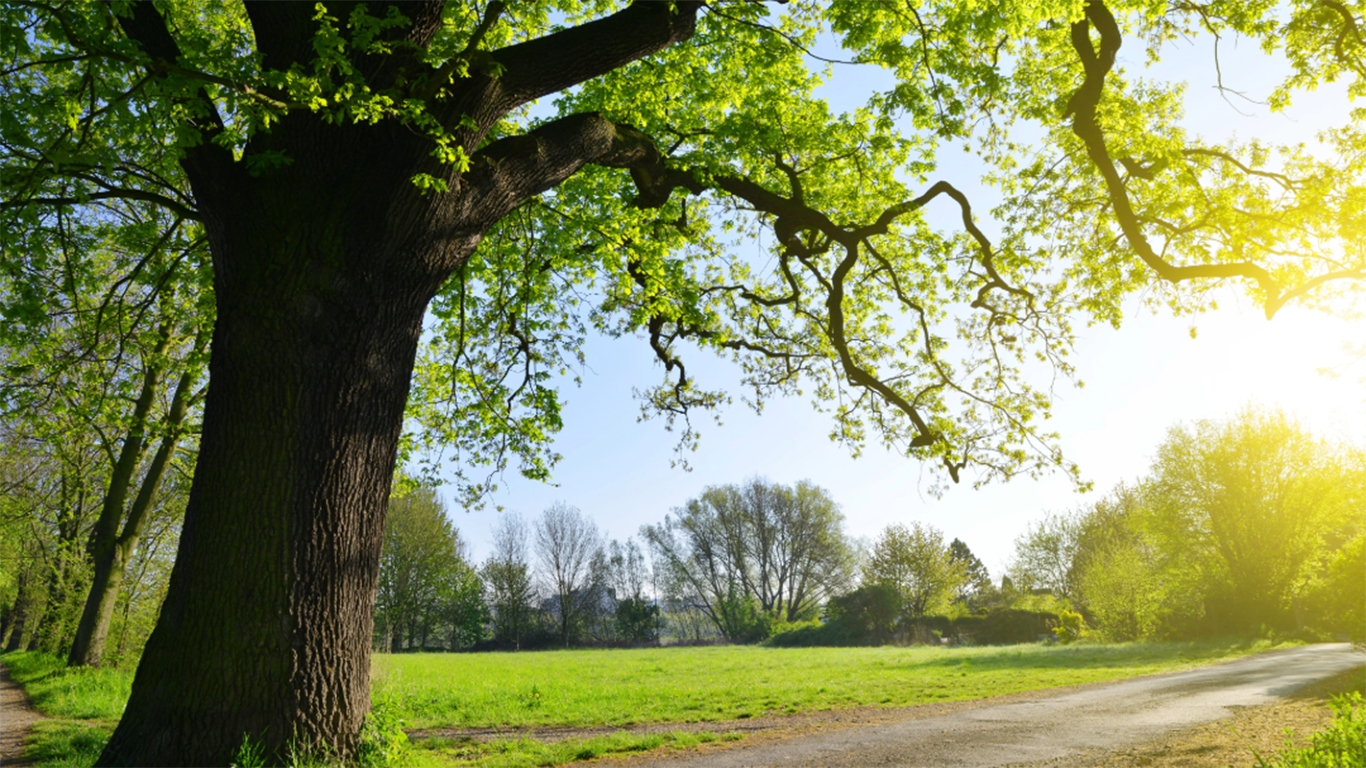
For homeowners who care about sustainability, engineered hardwood is often a more environmentally friendly option. The layered construction allows for more efficient use of raw materials, as only the top layer uses slow-growing hardwood species.
The core layers are often made from fast-growing, renewable wood sources or recycled materials, making engineered hardwood a resource-conscious alternative that still delivers premium aesthetics.
Sourcing from responsible manufacturers further enhances the environmental benefit. Look for engineered flooring that is Forest Stewardship Council (FSC) certified or uses adhesives and finishes with low VOC emissions. With VANTIA Hardwoods, for example, you can enjoy peace of mind knowing that environmental impact is part of the product conversation. Choosing engineered flooring is not only smart for your home, it’s smart for the planet.
Why VANTIA Hardwoods Is Your Go-To for Premium Engineered Floors
At VANTIA Hardwoods, we specialize in curated, high-quality engineered hardwood flooring that brings timeless beauty into modern spaces. Our wide plank collections are crafted from sustainably sourced materials and designed for both style and performance.
Whether you’re renovating a single room or planning a whole-home transformation, VANTIA has options that meet your needs:
Engineered planks suitable for all levels of the home
- Stylish finishes and textures ranging from classic to contemporary
- Products compatible with radiant heating and concrete subfloors
- Eco-conscious sourcing and manufacturing standards
And we don’t stop at flooring. VANTIA offers complete hardwood solutions, including stair treads, wall paneling, and more to elevate every corner of your home.
Ready to explore a smarter, more flexible hardwood flooring solution? Browse our collections or connect with one of our flooring specialists today.
